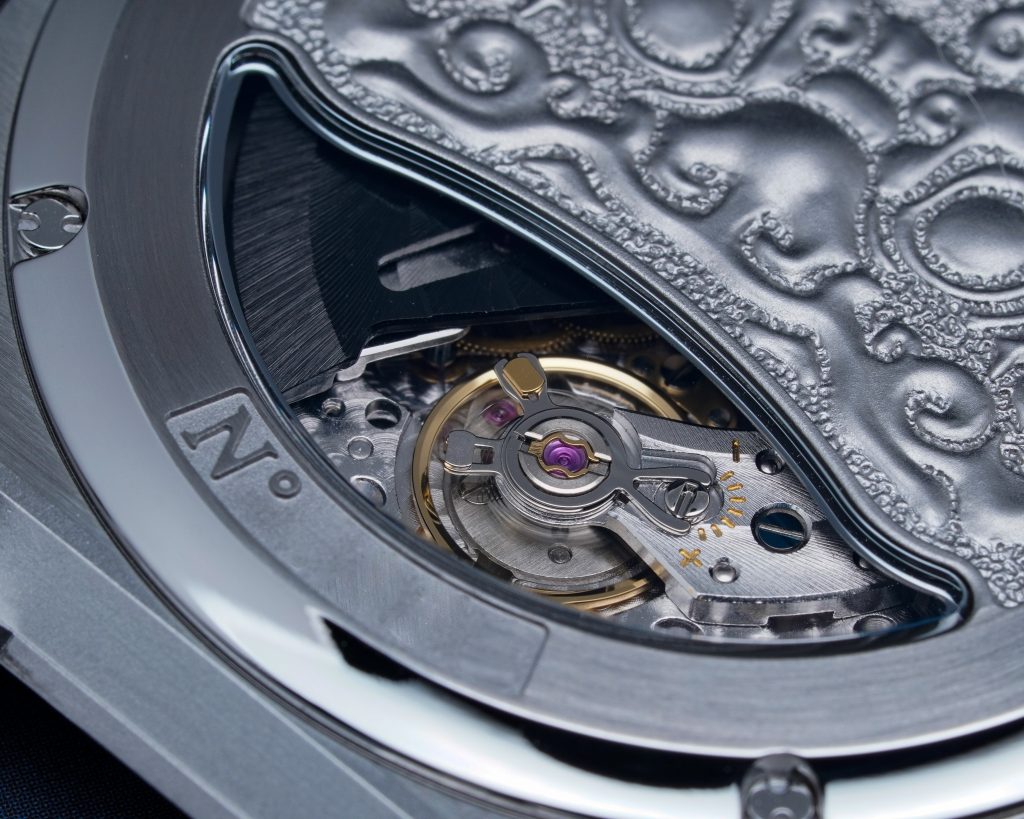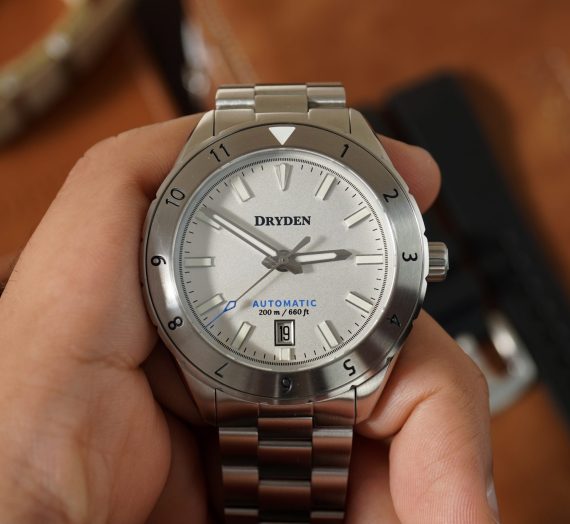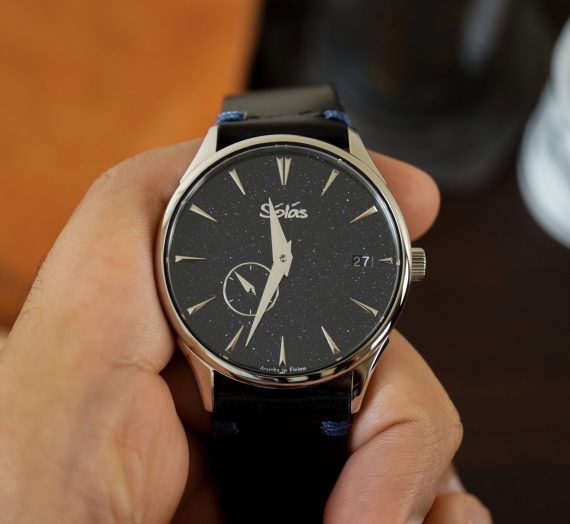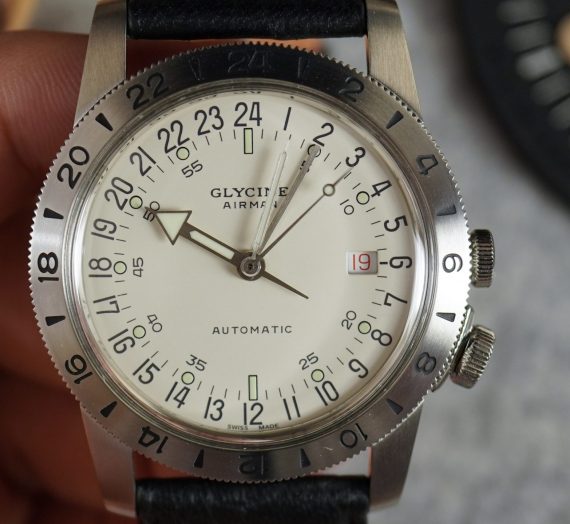Disclaimer: this video/review was not sponsored by Atelier Wen or any other entity.
Video
Review
Atelier Wen is the brainchild of two young French entrepreneurs, Robin Tallendier and Wilfried Buiron, who bring a unique blend of expertise to the brand. Robin started his horological journey at the age of 14, gaining experience at the French Chamber of Watchmaking in Shanghai, and Christie’s in London. Wilfried, born in Hong Kong, boasts an impressive educational background from China’s top universities – Peking University and Tsinghua University. Their combination of entrepreneurial spirit, watchmaking fluency and an understanding and respect for Chinese culture have significantly shaped the vision of Atelier Wen, a brand that ambitiously aims to merge French and Chinese design sensibilities and redefine modern Chinese watchmaking.
The brand’s mission to transform global perceptions of Chinese watchmaking is particularly resonant. In an era where even Swiss-made watches rely heavily on Chinese manufacturing, Atelier Wen challenges the lingering stereotypes about Chinese quality in watchmaking, aiming to elevate the status and perception of this heritage.
My previous experiences with Atelier Wen’s offerings, like the ‘Ji’ from their Porcelain Series, left a lasting impression – so much so that I purchased the ‘Hao’ model, only to regret its sale later on – and one that I haven’t been able to find since then. Today, we’ll delve into the V2.0 of the Perception in the ‘Piao’ dial variant, which retails just under $3300 USD. With only a few pre-order slots currently available and more expected in 2025, this model represents a significant step in Atelier Wen’s ongoing journey to craft watches that not only tell time, but also tell a story of Chinese craftsmanship.
Let’s check it out!
Case
The case is meticulously crafted, with a diameter of 40mm across from 3 o’clock to 9 o’clock, not including the crown, and 40mm across between the two cut-out sections. At its widest, from 8 o’clock to 2 o’clock, the case extends to 42mm. The lug-to-lug width measures 47mm, although the presence of fixed end links on the bracelet, which angles downward, adds extra overall length but with negligible impact on the overall dimensions. The case thickness is an impressive 9.5mm, inclusive of the crystal and case-back, while the crown is comfortably sized at 5.5mm.

Crafted entirely from 904L steel, known for its anti corrosive properties and it’s ability to accept good finishing with a jewelry like luster, the case and bracelet exhibit exemplary polished elements. The concave bezel and the continuous bevel that runs along the case through to the bracelet are particularly well-executed, imparting a luxurious appearance typically seen in much more expensive watches.


The design of the case resonates strongly with elements from Vacheron Constantin, drawing inspiration from the Reference 2215 Chronometer Royale‘s case silhouette and the Jörg Hysek designed 222‘s bracelet center links – though the latter may have been designed and manufactured by the renowned Gay Frères. The 2215 Chronometer Royale was a relatively obscure and short-lived model, and Atelier Wen cleverly built upon those design cues, adding pagoda-like curves to the case sides and a subtle curvature at the 12 o’clock and 6 o’clock positions where they gracefully angle towards the wrist

Functionality is also a focus, with a screw-down crown that features excellent grip and easy operation, enhanced by the embossed brand logo. The case-back showcases a beautifully embossed stone guardian lion, with its mouth cleverly revealing the movement inside through a sapphire crystal cover. Rated for 100m of water resistance, this watch combines robust utility with a dressy aesthetic seamlessly. The overall build quality and finishing are exceptional, and the newly added bevels on the V2.0 bracelet enhance the design and overall cohesion between case and bracelet.
Dial
Atelier Wen’s regular production line of Perception models presents a choice between three elegantly varied dial options: the serene light blue Piao, the salmon-colored Xia, and the grey Ying. Each variant brings its own unique appeal, with the grey Ying model distinguished by thermally blued hands, while the Piao and Xia models feature rhodium-plated hands.
Beyond these standard offerings, Atelier Wen has also ventured into several collaborative designs, rapidly expanding the Perception catalog. These limited editions include a striking 100-piece jade green dial created with Wristcheck, as well as two vibrant 100-piece collaborations with Revolution, featuring titanium cases with yellow and red dials. Additionally, an exclusive 36-piece edition was produced in partnership with Wristcheck and Secondeseconde. More recently, Atelier Wen has teased an intriguing small batch of purple dial tantalum perceptions, potentially a private run, showcasing their willingness to explore new materials.

In their latest variants of the Perception series, Atelier Wen has skillfully spotlighted the exquisite craftsmanship of China’s sole master guillocheur, Cheng Yucai. They recently unveiled a video log that delves into Cheng’s work and his innovative journey in creating his own rose engine-style machine to perform guilloché – a testament to his ingenuity and dedication to this rare art form. Guilloché is a meticulous and labor-intensive craft, requiring immense patience and precision. The process involves carving metal from the dial base using a fine (diamond) tip, with the overall pattern programmed into the machine while the depth and speed of the cutting are manually controlled.
This art form is revered among prestigious watchmakers like Breguet and Kari Voutilainen, where such detailed craftsmanship commands a high price. It’s noteworthy that even esteemed brands such as Patek Philippe appear to be gradually moving from hand-turned to automated stamped patterns in their dials, a shift seen in timepieces priced in the many tens of thousands. Similarly, Rolex’s recent introduction of a sky blue guilloché dial in their $30,000 platinum 1908 model has sparked discussions on whether it employs traditional engine turning, with most indications suggesting it does not. So I find it quite remarkable that Atelier Wen is offering genuine hand-turned guilloché dials in a price segment far more accessible than its high-end counterparts, distinguishing itself in a market where many rely on CNC or stamped patterns to simulate this aesthetic. While these dials may not rival those of Kari Voutilainen in their execution, they certainly get very close for less than 30x the price. I had the privilege of being able to photograph a friend’s Gronefeld Remontoire 1941 a while ago, and that watch hand one of Kari Voutilainen / Comblemine‘s hand turned dials.

The dial of the Atelier Wen watch features a central guilloché pattern encased by a distinctive moat-like design, enhancing the visual depth of the dial. Polished steel indices are neatly integrated within recesses that align with a floating chapter ring, adorned with a huí wén pattern that serves as a minute track. This design is both practical and aesthetically pleasing, with luminous paint applied to enhance visibility in low-light conditions.


The dial has a flat circular section and a rectangular area below it, where the brand’s logo and name are displayed. These sections are separated from the guilloché area by a subtle ridge. Transitioning between these different textures and levels presents challenges during the hand turning process, occasionally resulting in minor chipping at the edges. This issue is not unique to Atelier Wen, as it is also seen in other high-end watches like the Gronefeld Remontoire 1941 I mentioned earlier, though to a lesser extent. The complexity of Atelier Wen’s dial design, with its multiple cutouts for hour indices and flat areas for printing, accentuates these challenges.
The guilloché itself showcases an écailles de poisson (fish scale) pattern that is particularly striking under natural lighting. After owning and photographed many dozens of watches with stamped or CNC patterns, I’m convinced that minor imperfections from hand turned dials contribute to a dynamic interplay with light. The lume filled hour and minute hands are designed in a leaf style with hand-bent tips to reduce parallax errors, and their finishing is comparable to that of watches several times its price. The seconds hand lacks lume and has a capped center stack that features a circular brushed finish.
Overall this dial is exquisite. It looks magical in person and looks extremely impressive under macro. It is not without its blemishes, but I fully welcome these signs of a human operator after shooting dozens of stamped and CNC guilloché dials. The quality of printing and attention to detail on the dial components is excellent, and I can’t find it in my to be too critical of anything here.
Lume
The lume application on this watch is very tastefully executed. The elegantly elevated chapter ring adorned with the 回纹 (huí wén) pattern is printed in Superluminova X1. The leaf-shaped hands are also filled with the same high-grade Superluminova X1, ensuring both components glow brightly under low light conditions. In terms of performance, the lume on the hands is particularly robust, maintaining its brightness throughout the night, which contrasts slightly with the chapter ring’s lume that tends to fade more quickly.

In my video, I pitted the lume of this watch against several notable contenders: the new Black Bay 41 ‘Monochrome’, the San Martin Loong Year Edition, and a MING 17.09. The Perception holds its own admirably in this lineup, showcasing lume potency and endurance that competes closely with these well-regarded and much sportier models.
Movement
The Dandong/Peacock SL1588 movement powering this watch might not ring familiar to many, but rest assured, Dandong/Peacock (and the Liaoning Watch Factory) has a long-standing history (over six decades) in movement manufacturing, positioned as one of the more premium producers in China. While previous models like the Atelier Wen Porcelain Series used the SL3006, which had its quirks, the SL1588 presents a notable improvement in terms of reliability and function.


Unlike the SL3006, which I believe was based on the ETA2824-2 architecture, the SL1588 seems to draw inspiration from slimmer calibers, possibly akin to the Miyota 9 Series or Soprod A10, though its regulating mechanism most closely resembles that of the Soprod A10. This caliber bears similarities to the SL1702, maintaining roughly the same power reserve, with Atelier Wen enhancing the design’s compactness by omitting the date feature.
Atelier Wen ensures the movements are rigorously tested, leaving the factory with a precision of +/- 10s/d after undergoing drop and temperature tests. Further regulation to 5 positions is conducted before these movements are sent to the Horological Research Institute of Light Industry (HRILI) for additional verification.

Visually, the SL1588’s finishing is impressive, especially when compared to other Chinese movements. Through the watch’s case-back, one can appreciate the detailed côtes de Genève, perlage, and a black rhodium-plated tungsten rotor, and a few thermally blued screws. The aesthetic execution rivals that of any elaborè grade movement from brands like Sellita or ETA.
Performance-wise, the watch has maintained single-digit daily deviations in accuracy. The main drawback could be its lack of a hacking feature, which might deter some purists who prefer the ability to precisely set the time by stopping the balance wheel. However, for those who can overlook this, the movement offers solid performance and an excellent appearance from beneath that incredible case-back.

On The Wrist
The wearability of the Perception, with its 40mm diameter, 47mm lug-to-lug, and 9.5mm thickness, is exceptionally good on my 6.75″ wrist. The case design, coupled with sharply angled lugs, ensures a snug and comfortable fit that contours well around the wrist. The watch’s moderate thickness and a well-articulating bracelet contribute significantly to its overall comfort, making it an excellent choice for those who are particular about achieving a perfect fit.


A standout feature is the clasp, which includes an on-the-fly adjustable mechanism that allows for quick and easy resizing without the need to remove the watch. This mechanism is activated by pressing a logo-embossed button and is elegantly incorporated into a sleek, low-profile clasp that is shorter than many other adjustable clasps currently on the market. This innovative, telescopic extension integrated into the clasp’s swing arm is akin to solutions (Brogioli S.A) found in luxury brands like H. Moser & Cie, IWC, and Glashutte Original, and ranks among my favorite clasp designs due to its functionality and fit.
The bracelet itself is of excellent quality, featuring smooth edges and a fine finish, with the 904L steel responding beautifully to various finishing techniques. It tapers nicely from 22mm at the case to 18mm at the clasp, enhancing the watch’s aesthetic and ergonomic appeal.


While I am thoroughly impressed with how the watch and bracelet wear, the rubber strap does not meet the same high standards. Priced as a $200 add-on, the rubber strap‘s material feels mediocre, and the length is overly generous without offering size options. Additionally, the clasp on the rubber strap feels bulkier than necessary. Given the unique case design, finding third-party strap options that fit has been challenging too. So I would say skip the strap unless absolutely necessary.
Wrapping Up
To conclude this review, I will say that you’d be hard-pressed to find another watch on the market today that offers this level of build quality, finishing, comfort, and especially a hand-turned guilloche dial, all at this price point. For just over $3000, Atelier Wen provides an exceptional display of craftsmanship and meticulous attention to detail. Although the price has been creeping up over the past few years, it still strikes me as reasonable, though I hope the brand considers moderating future price increases.

Atelier Wen’s journey, from their early days sharing updates on Watchuseek to their initial Porcelain Series release, has been nothing short of inspiring. It’s evident that they are poised for even greater things – recently, they teased an upcoming tantalum piece and showcased some purple dial tantalum perceptions at Watches & Wonders 2024. Rumors of a new chronograph and other exciting projects suggest that Atelier Wen’s creative pipeline is bustling. For those who can appreciate something a bit different, or value supporting skilled artisans like Cheng Yucai, Atelier Wen is a brand worth your attention.




